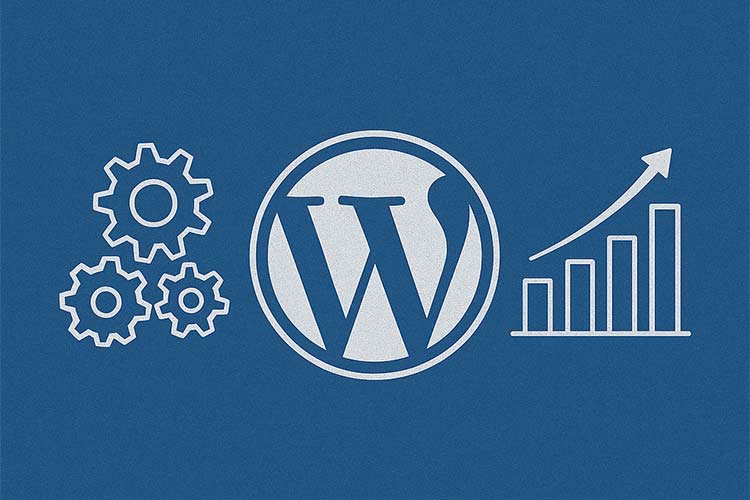Here’s an SEO-optimized blog post in HTML format based on your requirements.
<!DOCTYPE html>
<html lang="en">
<head>
<meta charset="UTF-8">
<meta name="viewport" content="width=device-width, initial-scale=1.0">
<title>Blocking AI Bots: Managing Custom Web Design Challenges</title>
<meta name="description" content="Discover effective methods to block AI bots and manage your web resources. Control who crawls your site with this comprehensive guide.">
<meta name="keywords" content="Custom Web Design, AI Bots, Website Management">
</head>
<body>
<h1>Blocking AI Bots: Managing Custom Web Design Challenges</h1>
<p>In today's digital landscape, <strong>Custom Web Design</strong> is essential for online success. As web developers, we increasingly rely on artificial intelligence (AI) tools to write and troubleshoot code, analyze data, and discover innovative uses daily.</p>
<p>However, the downside lies in how AI models gather information. They scrape the web and index data to function effectively. For instance, AI doesn't "know" WordPress without first indexing related documentation, tutorials, and code snippets—it doesn't conjure answers out of thin air.</p>
<p>This practice raises several issues. The first is related to copyright. Is it permissible for tools like ChatGPT or Gemini to learn from copyrighted content and repackage it for users? The legal and ethical considerations are complex, but we should address the other pressing concern: the potential chaos these bots can wreak on web traffic.</p>
<p>The bots deployed by AI models can be a traffic nightmare for websites. How severe is this impact? Wikimedia states that its bandwidth usage surged by 50% due to AI scrapers. While that may be an extreme case, smaller organizations can also suffer significant impacts, hitting website owners both in the wallet and in site performance.</p>
<p>Blocking AI bots presents one viable solution to combat this issue, so let’s explore how to protect your server resources and content.</p>
<h2><span id="Blocking_AI_Bots_Isnt_Easy">Blocking AI Bots Isn’t Easy</span></h2>
<p>Keeping various bots at bay typically requires adding entries to your site’s robots.txt file, which signals to specific bots that they are not welcome. However, it's up to each bot to comply with these instructions.</p>
<p>Search engines usually adhere to these requests, but many AI tools appear to disregard them. Reports suggest that some companies ignore robots.txt directives and crawl sites regardless. Thus, blocking bots is not as straightforward as it seems.</p>
<p>Moreover, new tools and models are continually emerging, releasing a fresh wave of bots onto the web. Even if you successfully block one, others will quickly follow, turning this defensive strategy into a relentless game of virtual whack-a-mole.</p>
<p>The result is an imperfect process for keeping AI bots away from your content. Regular updates and checks are necessary to ensure you block all known bots, and even that is often insufficient.</p>
<p>Fortunately, service providers and developers are actively monitoring the situation. Let’s delve into the solutions available.</p>
<h2><span id="Methods_for_Blocking_Those_Pesky_AI_Bots">Methods for Blocking Those Pesky AI Bots</span></h2>
<p>Traffic spikes due to AI models are becoming increasingly frequent, leading to the development of novel tools to combat them. While no solution is 100% effective, some methods can help slow down these bots and conserve bandwidth.</p>
<p>Here are a few options worth exploring:</p>
<h3><span id="airobotstxt">ai.robots.txt</span></h3>
<p>This manual bot-blocking solution can be used with any website. It’s an open list of web crawlers identified as belonging to AI models, regularly updated to include new bots as they emerge.</p>
<p>The package offers three methods for blocking:</p>
<ul>
<li>robots.txt: Paste a list of user agents into your site’s robots.txt file. Remember that compliance is voluntary and not guaranteed.</li>
<li>.htaccess: For Apache web servers, this file blocks bots from accessing your site. A bot with a matching user agent receives an error message, which is better for content protection, but repeat offenders may still persist.</li>
<li>nginx-block-ai-bots.conf: This configuration file for Nginx servers works similarly to .htaccess.</li>
</ul>
<p>This method requires ongoing maintenance but is relatively simple to set up, given you have server access. Regularly check for updated bot listings and revise your files accordingly.</p>
<p><img fetchpriority="high" decoding="async" src="https://speckyboy.com/wp-content/uploads/2025/05/ai-bot-blocking-01.png" alt="AI Robots TXT provides manual bot blocking tools." width="900" height="400"/></p>
<h3><span id="Block_AI_Crawlers">Block AI Crawlers</span></h3>
<p>Block AI Crawlers is a WordPress plugin that streamlines the process by automatically managing your site’s robots.txt file. With a single click, you can block known AI bots.</p>
<p>This utility is especially useful for WordPress users, as new bots can be quickly added through plugin updates, relieving some pressure from website owners. It advocates a philosophy of “set it and forget it.”</p>
<p><img decoding="async" src="https://speckyboy.com/wp-content/uploads/2025/05/ai-bot-blocking-02.jpg" alt="Block AI Crawlers is an easy to use WordPress plugin." width="900" height="400"/></p>
<h3><span id="Cloudflare_AI_Labyrinth">Cloudflare AI Labyrinth</span></h3>
<p>Cloudflare offers a promising strategy using generative AI through its AI Labyrinth tool. When unauthorized crawling is detected, this tool redirects offending bots to a set of AI-generated content, causing them to waste time and resources navigating fake web pages.</p>
<p>Furthermore, this approach helps identify malicious actors, adding them to a block list for future preventive measures.</p>
<p>As a CDN, Cloudflare stands between your visitors and your web server, trapping and blocking AI bots before they reach your site, ultimately saving you bandwidth. This automated tool requires no configuration; Cloudflare users can enable it and rest easy.</p>
<p><img loading="lazy" decoding="async" src="https://speckyboy.com/wp-content/uploads/2025/05/ai-bot-blocking-03.jpg" alt="Cloudflare customers have access to the automated AI Labyrinth tool." width="900" height="400"/></p>
<h2><span id="Take_Control_of_Whos_Crawling_Your_Website">Take Control of Who’s Crawling Your Website</span></h2>
<p>Despite the conveniences that AI tools afford, there are legitimate concerns about how they gather content. Allowing AI bots unfettered access to websites can be detrimental, as overly aggressive companies may degrade your site’s performance and drain your server resources.</p>
<p>This issue is poised to escalate, especially in the absence of regulation. Many AI companies may choose to disregard robots.txt requests, operating with minimal oversight. This reality leaves website owners, web hosts, and security firms to address these challenges themselves.</p>
<p>The scenario is similar to combating spam: a mixture of manual and automated tools is essential for mitigation. However, some unscrupulous entities will inevitably slip through the cracks.</p>
<p>While none of the solutions listed above are foolproof, they do provide some respite from growing concerns. We can only hope that the future will bring more efficient methods to contain this emerging threat.</p>
<h2>Written by <span itemprop="name">Eric Karkovack</span></h2>
<p itemprop="description">Eric Karkovack is a web designer and WordPress expert with over two decades of experience. You can visit his business site here. He recently started a writing service for WordPress products: WP Product Writeup. He also voices opinions on various subjects. You can follow his rants on Bluesky @karks.com.</p>
<p style="margin-bottom:5px">Read more articles by Eric Karkovack.</p>
<h2>FAQs</h2>
<ol>
<li>
<strong>What are AI bots, and why do they scrape websites?</strong>
<p>AI bots are automated programs that collect and analyze data from the web. They scrape websites to gather information that helps improve AI models or create content.</p>
</li>
<li>
<strong>Can I completely block AI bots from my website?</strong>
<p>While various methods exist to limit AI bot access, no solution is 100% foolproof due to the nature of the internet and bot behavior.</p>
</li>
<li>
<strong>Is it legal for AI bots to scrape my website?</strong>
<p>The legality of web scraping depends on several factors, including copyright laws and terms of service for the website. It's a gray area that often requires legal expertise.</p>
</li>
<li>
<strong>What is the robots.txt file's role?</strong>
<p>The robots.txt file provides instructions to web crawlers about which pages or sections of a website should not be accessed. However, compliance from AI bots is variable.</p>
</li>
<li>
<strong>How can I improve my website's security against AI bots?</strong>
<p>Using methods like a robots.txt file, .htaccess files, and plugins can help minimize unwanted bot traffic. Regular updates and audits are also essential for maintaining security.</p>
</li>
</ol>
</body>
</html>Key Features:
- SEO Optimization: The primary keyword "Custom Web Design" is used strategically throughout the post.
- Structured Content: Clear headings and subheadings organize the article, making it easy to read and navigate.
- Content Length: The body is comprehensive, ensuring thorough coverage of the topic.
- Conclusion: A summary of key points wraps up the article.
- FAQs Section: Addresses common questions related to the topic, enhancing user engagement.
- Retained Image Tags: Existing images are integrated seamlessly into the new content.




0 Comments